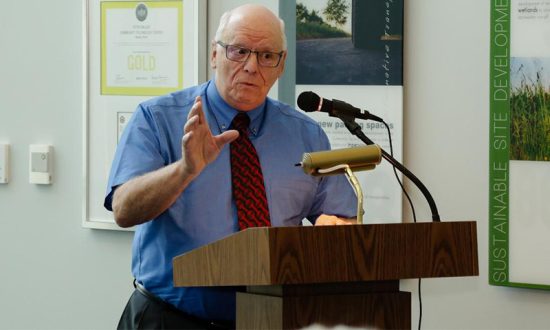Dr. Hans Andrews is the Distinguished Fellow in Community College Leadership through Olney Central College in Olney, Illinois. He is a former president of the college. He also served as Dean of Instruction at Illinois Valley Community College and Vice President for Community and Student Services at Kellogg Community College in Battle Creek, Michigan. He was an adjunct teacher for Illinois State University and a business teacher-counselor in two secondary schools.
With widespread teacher shortages in most countries appearing at this time it is time to look at what is happening. We then need to make some commonsense changes that will help alleviate this growing crisis.
Open new pipelines for teacher candidates
Teacher shortages have been expanding into what now appears to be a ‘crisis’ situation. This has been a concern over the past decade with little or no changes being made to offset this yearly growing problem. Now as we look around the United States and most other countries there are solutions that can be tapped.
There are over 1,200 community and technical colleges in the United States. India, the U.K. and several other countries also have these two year colleges that could quickly be expanded to offer the last two years of a baccalaureate degree in teaching. Baccalaureate degrees have been legislated for community colleges in a number of states in the U.S. but very few for preparing teachers. When the Baccalaureate Degree in Nursing (BSN) was being demanded by more health provides several states did allow for legislation to be passed. Community colleges in these states did help cut back the shortages in fairly short order.
In most secondary schools in the United States there are dual-credit programs for their students in their last two years. These courses carry both secondary school credit and college credit. It is not unusual now for students to have completed one year of college. An additional group is now completing two years and receiving an Associate Degree (2-year degree) at the same time as their secondary school commencement.
These dual-credit students can enter either universities or community colleges and be either one-fourth or one-half the way to their teacher education baccalaureate degrees. They do need to be ‘recruited’ early and during the dual-credit years with programs such as Educators Rising. This is a student club type of program which can be placed in secondary schools to help students learn about the many opportunities in teaching. The program has a website that is easily accessed.
There will be pressure from universities, leaders in state and national agencies, and others to keep the present system in place. Political people in each of our countries are also aware of the growing shortages of teachers in almost every one of their districts. These are persons who need to be on the forefront of pushing back on the pressures and move legislation forward that allows for these new pipe lines for teacher development to evolve. The time is now as many students in all of the countries are presently in classrooms without qualified and competent teachers.
To date much of the work to overcome the shortages has been in legislating and/or offering ‘patches’ or ‘band aids’ as they have been called. The legislation in the U.S. to date has centered on the following: (1) adding more hours of classes to the teachers they presently have; (2) bringing back retired teachers and not deducting pay from their retirement monies; (3) expanding the number of days substitute teachers can work; (4) allowing bus drivers, janitors, cafeteria workers, and other non-teaching staff to fill in classrooms that teachers are not available to fill on days, weeks, etc. This author sees this is very sad when the profession of teaching has to put together some of these patches to cover classes for their students.
Lower the costs for training new teachers
The cost of obtaining a baccalaureate degree in teaching continues to go up almost every year. In order to enroll more future teachers with diverse backgrounds these costs are far too often out of reach. Many students with diverse backgrounds are already enrolled in their local area community or technical colleges but too often lack the financial resources to go beyond that level of education.
- Offer the teacher education programs new the homes of the candidates
- Recognize that many of these community-technical students work or have families
- Look at offering ‘tuition waivers’ to those in financial need
- Offer financial incentives with stipulations to work in the local schools after becoming teachers
- Avoid student loan debt; obtain school foundation or local financial support for these future teachers
- Use dual-credit programs to obtain one or two years of college at little to no cost to students
Improve the school climate
There are many studies out that have highlighted the reasons so many teachers have been moving away from teaching into early retirements or other work that offers better pay or working conditions. Near the top of every list is teacher pay. Other areas highlighted are:
- Move away from High Stakes Testing; this has destroyed teacher cooperation in many schools
- Evaluate teachers on their teaching ability
- Assign teachers only to those areas they are trained and educated to teach
- Have a recognition program as an outgrowth of teacher evaluation
Prognosis for the future
There is definitely a need in most countries to have new pipelines that will produce many of their future teachers. The present university pipelines are proving unable to attract enough teacher candidates to meet the needs now. Some have even closed their teacher education departments. This condition has been happening over the last decade. Each country needs to identify their own way of moving to slow down and eliminate their teacher shortages. There are long-term solutions that are now in need of being identified and utilized.


